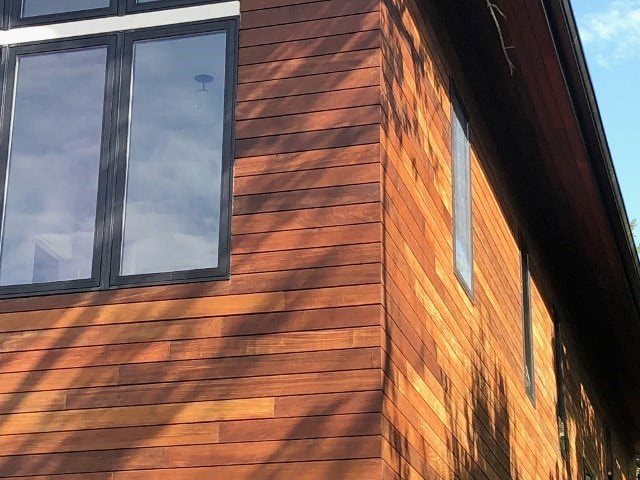
Related Posts
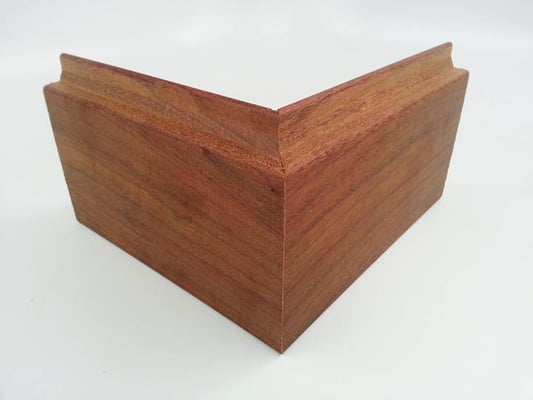
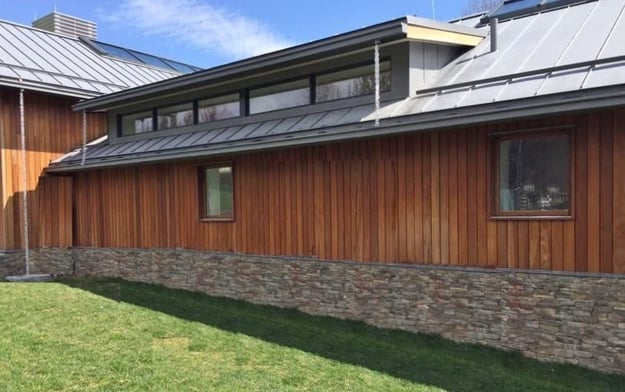

A rain screen is a design and installation method to let your siding ventilate. The siding stands off the outside wall. A rain screen lets your home or building breathe better. This can help minimize the mold. From the outside, most wood rain screens look alike. But they don’t perform alike. Before deciding, there’s a lot you should consider.
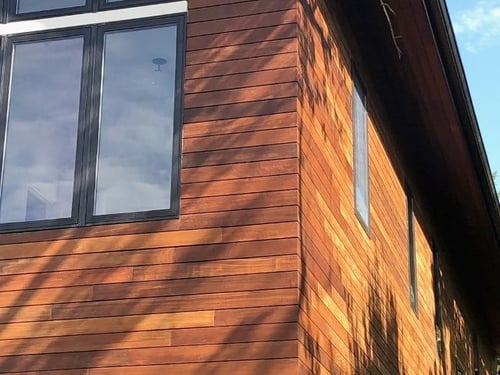 All rain screens look alike from the outside. It's what's going on behind the siding that matters
All rain screens look alike from the outside. It's what's going on behind the siding that matters
What is a Closed Joint Wood Rain Screen?
Closed joint systems are the most basic rain screen option. Wood furring strips keep the siding off the building envelope (outside wall). The ventilated air space between the furring strips is what makes it a rain screen. Without back ventilation, it's not a rain screen, and the wood siding will rot.
If you’ve ever seen paint peeling off old cedar siding, it’s rarely the paint’s fault. Sometimes it's poor flashing. But most times it is excess moisture in the siding. Trapped. With nowhere to go and nothing to do – except rot.
A closed joint rain screen only ventilates at the top and bottom, so it’s very limited. But it’s better than not having a rain screen at all.
Benefits of a Closed Joint Wood Rain Screen with Wood Furring Strips
How does a closed joint wood rain screen work?
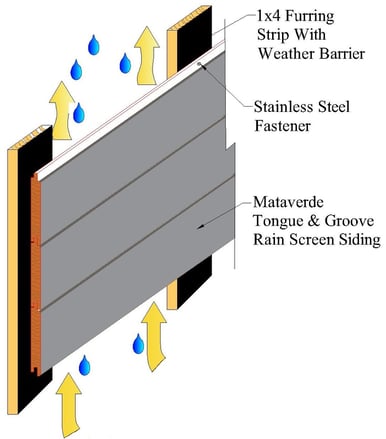 A closed joint rain screen only ventilates at the top and bottom of each wall cavity channel
A closed joint rain screen only ventilates at the top and bottom of each wall cavity channel
Problems with a Closed Joint Wood Rain Screen with Wood Furring Strips
Common types of siding used for close joint rain screens are clapboard, ship lap and T&G (tongue and groove). This system is often lower cost up front than other rain screen methods. This makes it a tempting option to keep the construction costs down.
However, the long-term costs, and maintenance costs are usually higher than other rain screen options. The life expectancy of this type of system is usually in the 10 year± range.
What Are The Other Rain Screen Options?:
Open Joint Wood Rain Screen with Furring strips (Better- But Not the Best):
An open joint wood rain screen with wood furring strips works better than a closed joint system. In an open joint system, rain screen clip hardware allows for small spaces between each row of siding. So it has more places for the wall cavity to ventilate.
The open joints allow some natural convective air movement in each wall cavity channel. However, this method has the same limitations for furring strips. When installed properly, open-joint furring strip systems have an anticipated life expectancy of 10-15 years or more.
How Does an Open Joint Wood Rain Screen with Furring Strips Work?
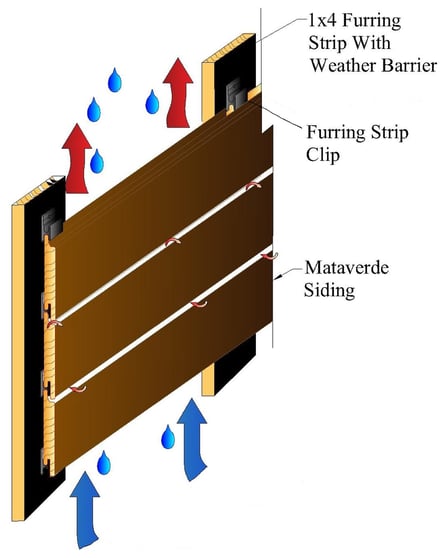
An open joint rain screen with wood furring strips is more effective than a closed joint rain screen. But it still has furring strips.
Open Joint Wood Rain Screen with NO Furring Strips (BEST):
An open joint rain screen with NO furring strips works best of all. This rain screen method is often referred to as a “pressure equalized” rain screen. There are no furring strips to interfere with air movement in the wall cavity. The Climate-Shield rain screen system is the best example of this method.
This rain screen method allows for maximum air flow. The wall cavity dries much faster than any other rain screen system. That’s why it performs better. That’s why it has a much higher life expectancy than other rain screen methods.
How Does an Open Joint Rain Screen with NO Furring Strips Work?
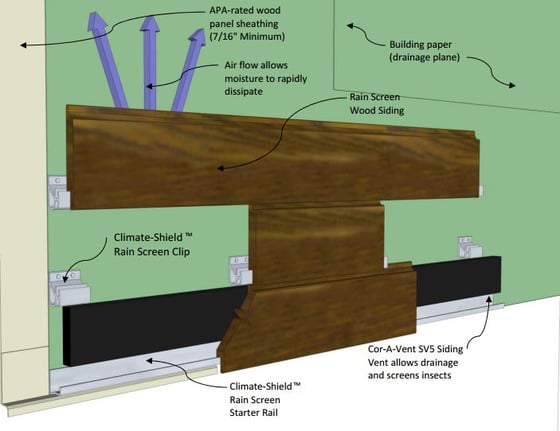
The Climate-Shield rain screen is a fully patented high-performance system
This open joint, no furring strip rain screen method is easier to install, saves labor costs and outperforms other rain screen methods. When installed properly, this method will last 25 years and much longer.
We hope you enjoyed this article. Please visit MataverdeDecking.com for additional information about rain screen installation, rain screen wood siding options, check out rain screen project galleries and lots more.


